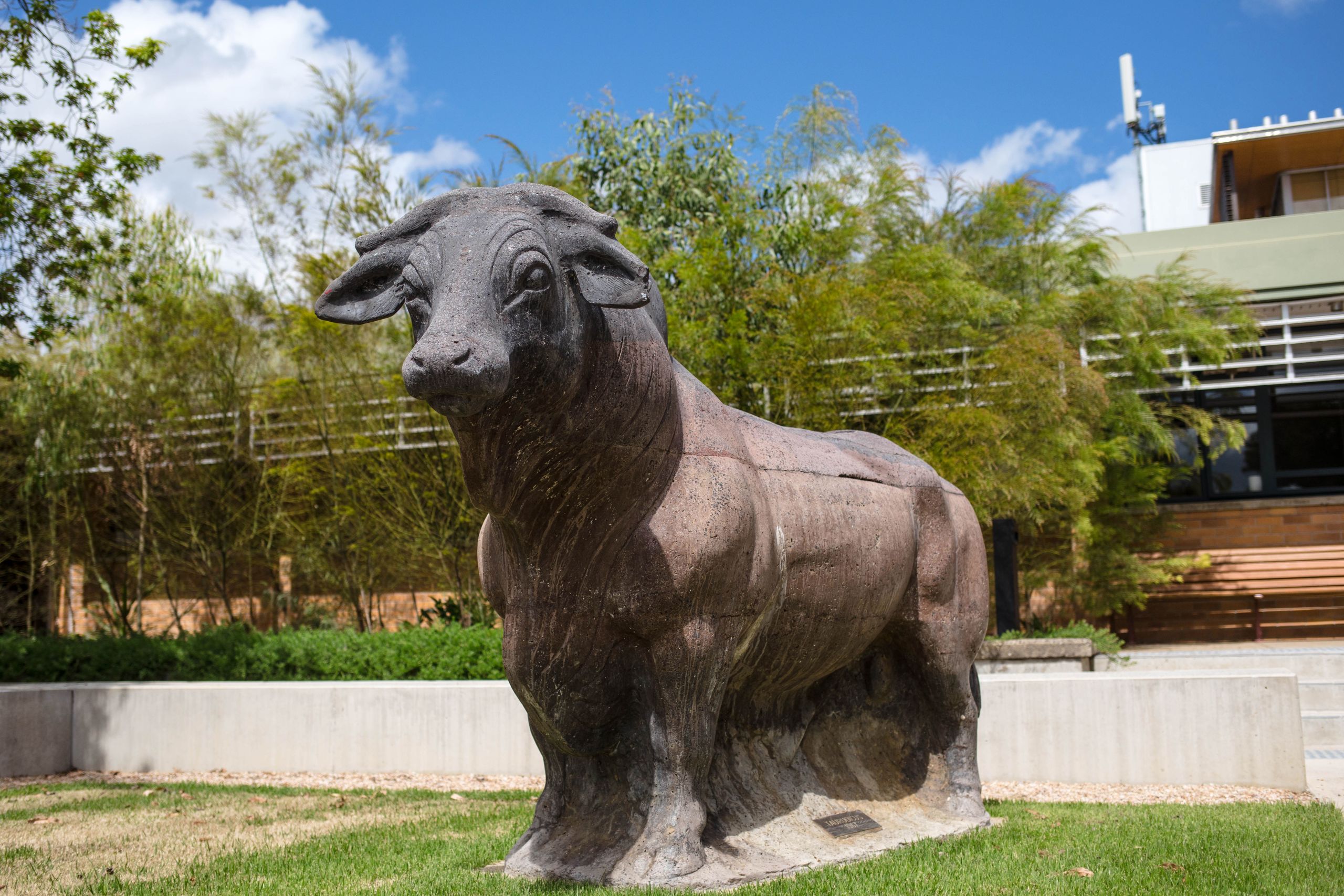
Welcome to the third instalment of 'UQ by design', a 12-part Contact series celebrating the beauty and abundance of UQ's cultural assets. Join us each month as we take you on a virtual guided tour across UQ's three campuses, providing a brief overview of the pieces and where you can find them. This month, we take a look at what a load of bull exists at the University!
Gatton is home to two bull-related sculptures, Taurudicus and a frieze commemorating Queensland’s agricultural heritage, while St Lucia has its own lode with a couple of bulls bedecking the Forgan Smith building.
Crafted in polished terrazzo by Queensland sculptor Leonard Shillam (1915–2005) in 1967, the larger than life-size Taurudicus depicts a hybrid beef bull, and symbolises the scientific advances already made in the Queensland beef industry and those predicted for the future. The sculpture was partly funded by the Queensland Agricultural College Old Boys’ Association (now Gatton Past Students’ Association) and displays the characteristics of several different breeds, culminating in a new breed modified by technology and scientific progress. It stands at the front of the Animal Industries building at the head of the Central Walkway.
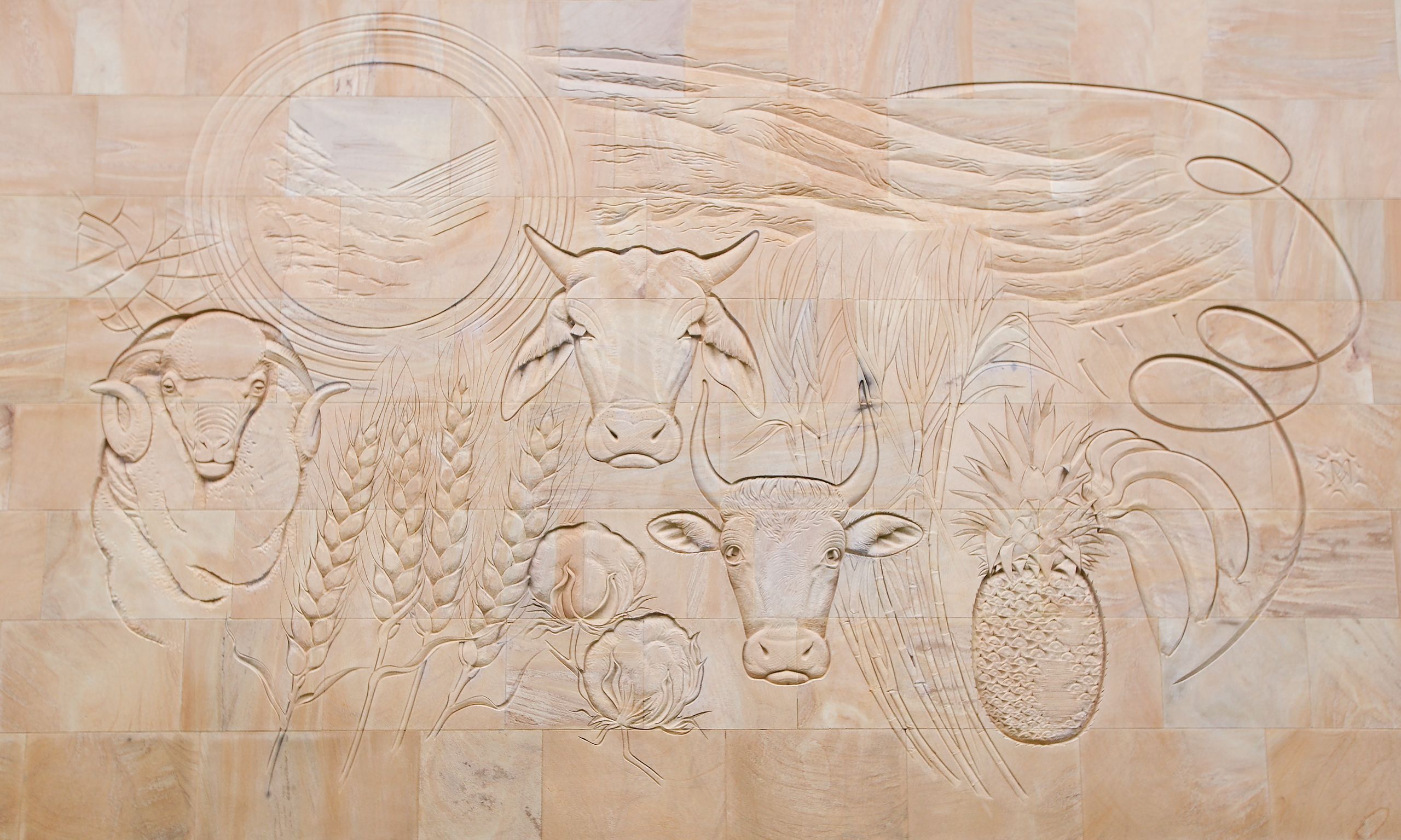
The adaptation of agriculture in Queensland frieze at UQ Gatton.
The adaptation of agriculture in Queensland frieze at UQ Gatton.
The monumental 54-square-metre Helidon freestone frieze The adaptation of agriculture in Queensland features two large bovines at its centre. Carved in 1987 by Dr Rhyl Hinwood AM (1940–) to mark UQ Gatton’s 90th anniversary, the frieze depicts Queensland’s agricultural industries of wool, beef, dairy, cotton, fruit and vegetables, and grain, and is overlaid with images of the weather extremes – cyclones, drought and harsh seasonal changes – that impact all growing ventures in Queensland.
According to its creator, “The sun radiates its energy and in its centre is reflected natural vegetation besides encroaching cultivation. Changing seasons and weather patterns traverse the skies, sometimes bringing extremes of drought and flood. Below these climatic influences, agriculture flourishes.”
The carved wall is a popular backdrop in many post-graduation Instagram photos.
Click on the photos below to reveal the full image

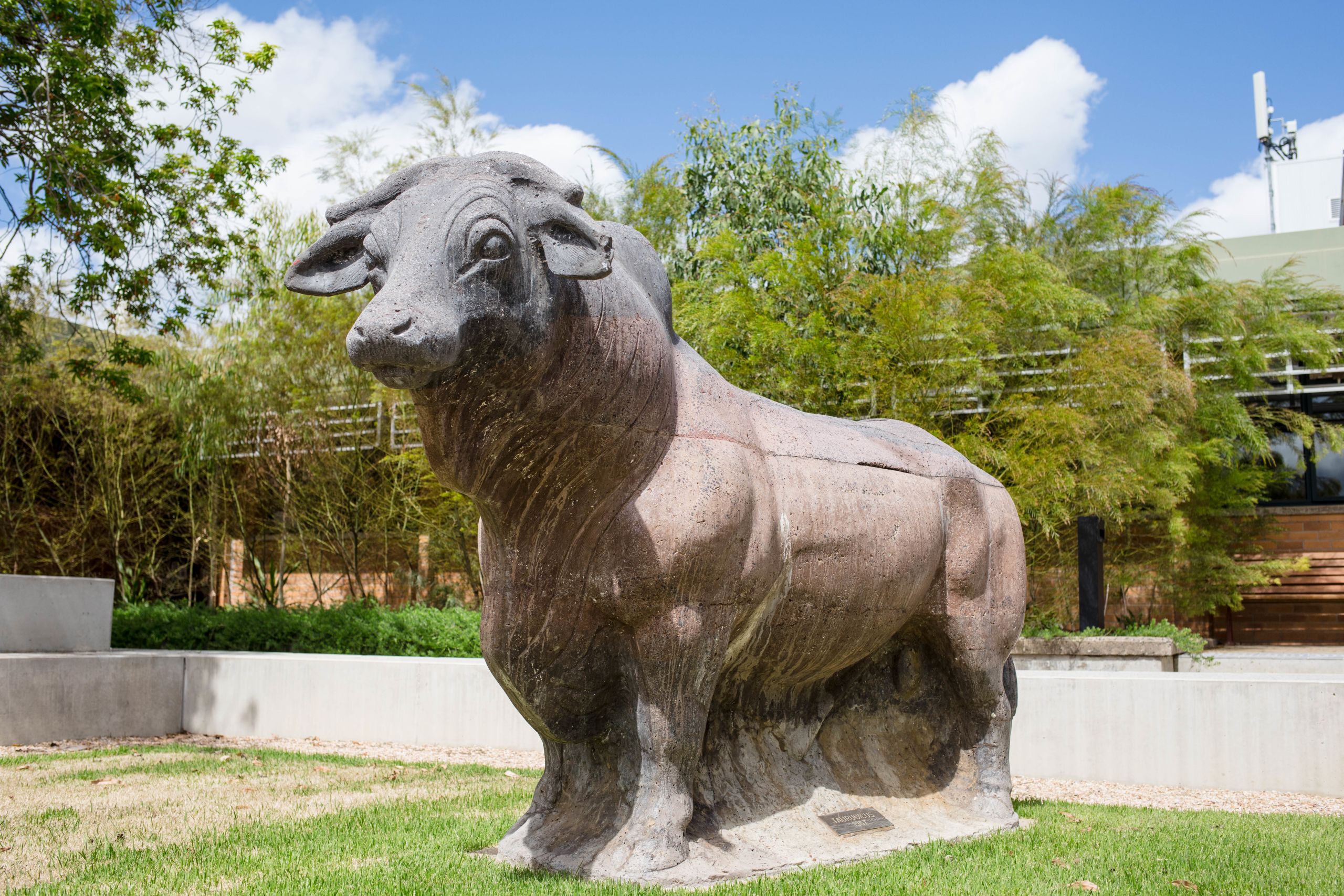
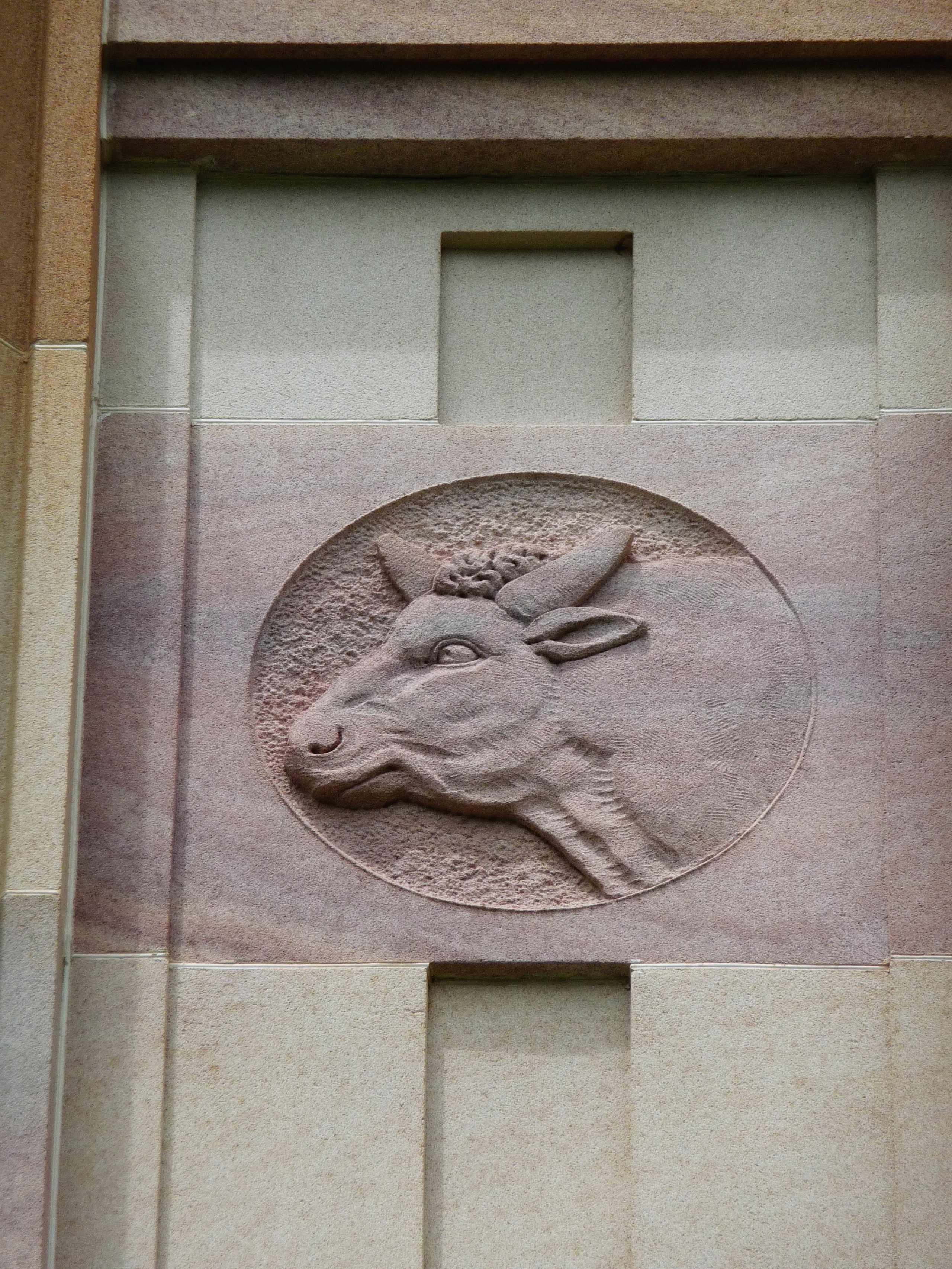
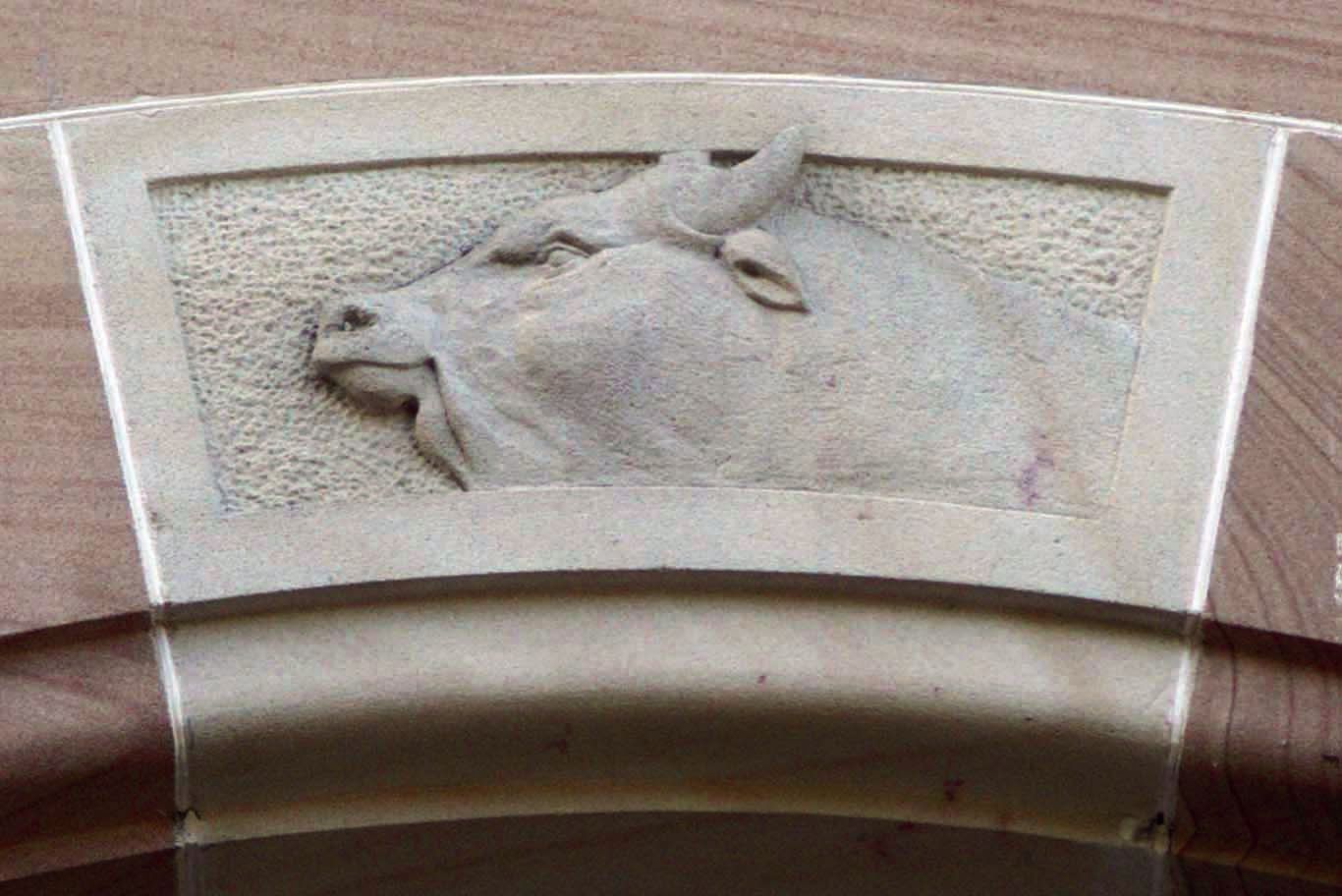

The 54-square-metre Helidon freestone frieze The adaptation of agriculture in Queensland located near the Foundation building at UQ Gatton.
The 54-square-metre Helidon freestone frieze The adaptation of agriculture in Queensland located near the Foundation building at UQ Gatton.

The Taurudicus bull sculpture that can be seen at the head of UQ Gatton's Central Walkway.
The Taurudicus bull sculpture that can be seen at the head of UQ Gatton's Central Walkway.

The roundel of a bull on the exterior of the Forgan Smith building at UQ St Lucia.
The roundel of a bull on the exterior of the Forgan Smith building at UQ St Lucia.

The arch-carving of a bull facing the Great Court at UQ St Lucia.
The arch-carving of a bull facing the Great Court at UQ St Lucia.
Among the hundreds of plants and animals adorning the walls of the Great Court at St Lucia are two bull heads, Bos Taurus L. (Bovidae), carved in the 1940s or ’50s by the first University Sculptor, John Muller (1873–1953).
One is a roundel (a decorative panel, round in form), located on the exterior of the Law end of the Forgan Smith building.
The other is a low-relief arch-carving situated on the Arts end of the Forgan Smith building, facing the Great Court lawn.
It would seem that Queensland has long relied on the strength and quality of its 'bull' if the creation of four major bovines over a 40-year period is anything to go by!
Be sure to check back in next month, as Contact looks at UQ's sentinel statues.
Words and concept: Suzanne Parker
Artwork and design: James North
Photography: Anjanette Webb
Contributors: Barbara Robinson
All artworks and artefacts mentioned in this series are located on UQ's St Lucia, Gatton and Herston campuses, and we acknowledge the Traditional Owners and their custodianship of the lands on which the University stands. We pay our respects to their Ancestors and their descendants, who continue cultural and spiritual connections to Country. We recognise their valuable contributions to Australian and global society.

